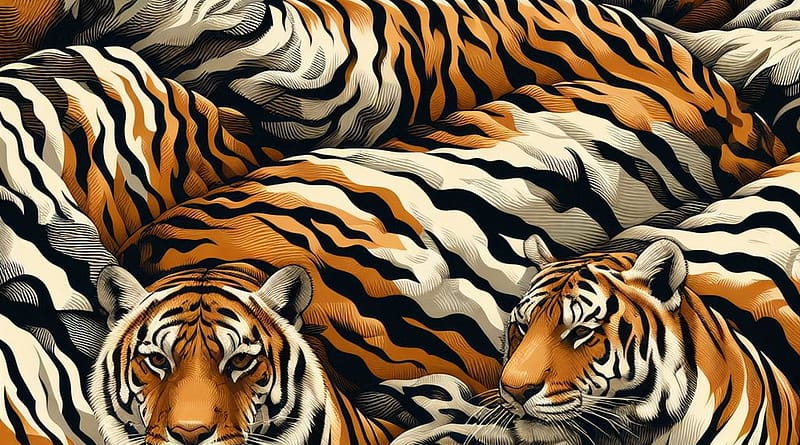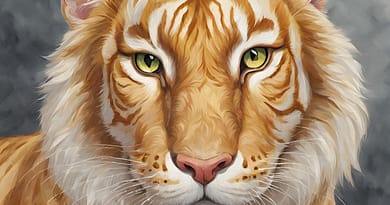Tiger Stripe Camo: History, Design, and Applications
Introduction
Tiger stripe camouflage, with its unique blend of aesthetics and functionality, has played a significant role in both military history and contemporary fashion. This detailed guide delves into the origins, effectiveness, and cultural impact of tiger stripe camo, along with practical advice on creating your own patterns and choosing the best products.
Historical Context and Evolution
Tiger stripe camo emerged as a crucial tool in jungle warfare, particularly during the Vietnam War. It was initially adopted by the South Vietnamese Armed Forces, and its effectiveness in dense jungle environments led to its widespread use among U.S. Special Forces and Navy SEALs. The pattern was specifically designed to provide concealment in the lush landscapes of Southeast Asia, and its irregular stripes and dark tones were ideal for disrupting the human silhouette.
Deeper Historical Analysis
The use of tiger stripe camo extended beyond the Vietnam War. Post-war, the pattern saw adaptations and variations in different countries and conflicts. Understanding its evolution provides insight into the changing nature of camouflage and its importance in modern military strategy.
Insights from Military Historians
Military historians note that the tiger stripe camo’s design was influenced by earlier camouflage patterns used in World War II and the French Indochina War. Its effectiveness in Vietnam led to its iconic status, making it a symbol of jungle warfare and special operations.
Effectiveness in Various Environments
While tiger stripe camo is highly effective in jungle settings, its utility in other environments like urban or desert landscapes is limited. Camouflage experts emphasize the importance of pattern and color adaptation to match different terrains, highlighting the need for versatility in modern camouflage designs.
Expert Opinions on Camouflage Technology
Experts in camouflage technology explain that the success of any camouflage pattern, including the tiger stripe, depends on various factors like background matching, movement, and light conditions. The evolution of digital and 3D camouflage patterns in recent years demonstrates the ongoing innovation in this field.
DIY Techniques for Creating Tiger Stripe Camo
Creating a tiger stripe camo can be a rewarding project for enthusiasts and hobbyists. Detailed steps for painting and spray painting techniques offer a hands-on way to understand and appreciate the design intricacies of this pattern.
Step-by-Step Painting Guide
- Select appropriate colors based on the intended environment.
- Sketch a tiger stripe pattern, considering the scale and spacing of the stripes.
- Use masking tape to outline the stripes and protect the base color areas.
- Apply paint in layers, allowing each to dry for a consistent finish.
Spray Painting Method
- Choose suitable spray paint colors for your environment.
- Create or use stencils for consistent and uniform stripes.
- Work in a well-ventilated area and apply paint in controlled bursts.
- Allow sufficient drying time between layers to avoid smudging.
Cultural Impact and Fashion Trends
The adoption of tiger stripe camo in fashion highlights its aesthetic appeal and cultural significance. It has been featured in various clothing lines, from streetwear to high-end fashion, often symbolizing rebellion, strength, and a connection to military heritage.
Fashion Experts’ Perspectives
Fashion designers and experts discuss how tiger stripe camo has been reinterpreted in contemporary clothing, blending military elements with modern style. Its versatility and bold pattern make it a popular choice for those looking to make a statement.
Modern Military and Tactical Applications
Despite its historical origins, tiger stripe camo remains relevant in modern military and tactical gear. Special forces and tactical units worldwide continue to use variations of the pattern, especially for operations in forested or jungle environments.
Insights from Tactical Gear Specialists
Specialists in tactical gear and military equipment explain the ongoing use of tiger stripe camo in specialized units. They highlight its psychological impact on both the wearer and the observer, as well as its practical advantages in specific environments.
Top 5 Tiger Stripe Camo Products on Amazon
Here are the top five tiger stripe camo products available on Amazon, complete with features, pros, cons, and prices:
- Wrangler Authentics Men’s Regular Tapered Cargo
-
- Features: 100% Cotton, multiple pockets, tapered leg.
- Pros: Comfortable fit, durable fabric, practical for everyday use.
- Cons: Limited color variations.
- Check Reviews on Amazon
- Wrangler Authentics Men’s Premium Relaxed Fit Straight Leg Cargo Pant
-
- Features: Relaxed fit, straight leg, 100% cotton.
- Pros: Spacious and comfortable, ideal for outdoor activities.
- Cons: May be too loose for some preferences.
- Check Reviews on Amazon
- Rothco Tactical BDU Pants
-
- Features: Military-grade material, adjustable waist tabs, reinforced seat and knees.
- Pros: Highly durable, suitable for tactical use.
- Cons: Bulkier compared to casual pants.
- Check Reviews on Amazon
- Rothco Camo T-Shirt
-
- Features: Cotton/polyester blend, classic fit, camo print.
- Pros: Comfortable for everyday wear; versatile design.
- Cons: Print may fade with frequent washing.
- Check Reviews on Amazon
- Rothco Medium Transport Pack
-
- Features: Large capacity, MOLLE-compatible, durable polyester fabric.
- Pros: Ideal for hiking and tactical use; spacious compartments.
- Cons: Might be too large for everyday carry.
- Check Reviews on Amazon
FAQs on Tiger Stripe Camo
Is Tiger Stripe Camo Effective?
Yes, tiger stripe camo is effective, particularly in dense jungle environments. Its irregular stripes and coloration are designed to break up the human silhouette, making it harder to discern against the backdrop of foliage and shadows. However, its effectiveness can vary depending on the specific environment.
How to Paint Tiger Stripe Camo?
To paint tiger stripe camo, follow these steps:
- Choose colors that match your intended environment (typically shades of green, brown, and black).
- Sketch a tiger stripe pattern onto the surface or fabric.
- Use masking tape to cover areas that will remain the base color.
- Apply the different colors in layers, allowing each to dry before adding the next.
How Effective Is Tiger Stripe Camo?
Tiger stripe camo’s effectiveness largely depends on the environment. In jungle settings, it’s highly effective due to its design that mimics natural shadows and foliage. In other environments, like urban or arid landscapes, its effectiveness is reduced.
How to Make Tiger Stripe Camo?
To make tiger stripe camo, you can either paint or spray paint the pattern onto fabric or a surface. The key is to replicate the irregular, striped pattern typical of tiger stripe camo, using colors appropriate for your environment. The process involves sketching the pattern, using masking tape for precision, and applying layers of paint.
How to Spray Paint Tiger Stripe Camo?
Spray painting tiger stripe camo involves:
- Choosing appropriate spray paint colors.
- Using a stencil or freehand sketch to create the tiger stripe pattern.
- Applying the spray paint in controlled bursts, focusing on one color at a time.
- Allowing each layer to dry completely before applying the next.
When Was Tiger Stripe Camo Used?
Tiger stripe camo was most notably used during the Vietnam War. It was initially adopted by the South Vietnamese Armed Forces and later by various U.S. military units, particularly those operating in jungle environments.
Who Wore Tiger Stripe Camo?
Tiger stripe camo was worn by several military groups, most famously by U.S. Special Forces, Navy SEALs, and Long-Range Reconnaissance Patrols (LRRPs) during the Vietnam War. It was also used by various local forces and mercenary groups in Southeast Asia.
Who Wore Tiger Stripe Camo in Vietnam?
In Vietnam, tiger stripe camo was predominantly worn by U.S. Special Forces, including the Green Berets and Navy SEALs, as well as LRRPs. These units favored the pattern for its effectiveness in the dense jungles of Vietnam, where traditional camouflage patterns were less effective.
Conclusion
Tiger stripe camo offers a fascinating blend of history, design, and practicality. From its origins in jungle warfare to its modern applications and cultural significance, this pattern continues to captivate and inspire. Whether you’re interested in military history, fashion trends, DIY projects, or tactical gear, tiger stripe camo presents a unique and intriguing topic for exploration and appreciation.
Related Article:









